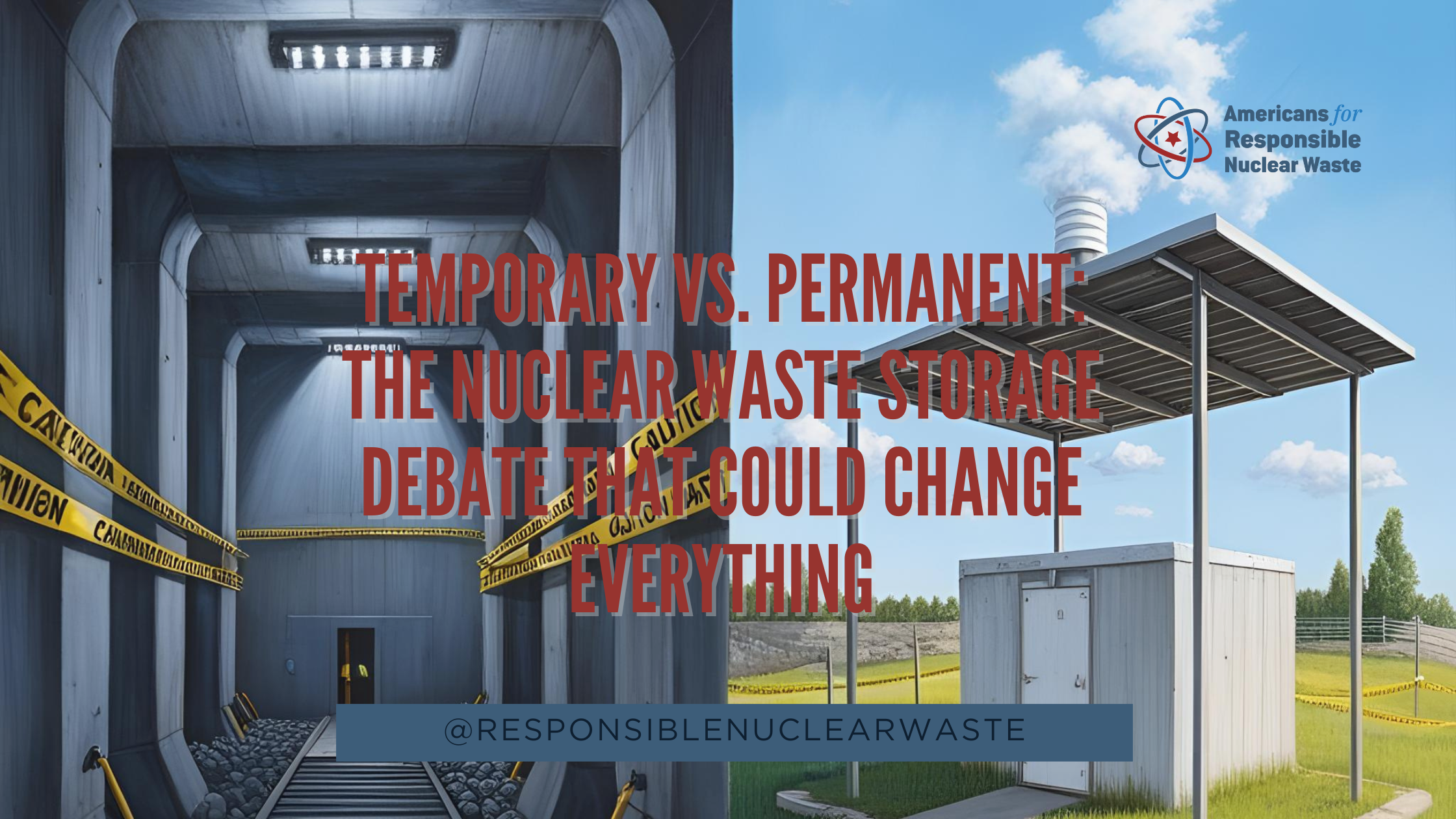Temporary vs. Permanent: The Nuclear Waste Storage Debate That Could Change Everything
In the ongoing debate over how the U.S. should manage its nuclear waste, one key distinction is often misunderstood or ignored: the difference between a temporary storage site and a permanent repository. Understanding this difference isn’t just semantics—it’s central to why communities across the country, especially in Texas and New Mexico, are rising up to say “not here, not like this.”
What Is Temporary Nuclear Waste Storage?
Temporary—or interim—storage facilities are meant to hold nuclear waste until a permanent solution is developed.
Often located at or near reactor sites or at regional consolidation facilities
Typically rely on surface-level or shallow underground concrete canisters
Assumed to be a stopgap solution for 20–40 years
Not built or regulated for multi-century containment
The problem? Interim sites across the U.S. have been holding waste far beyond their original timelines—without adequate oversight or infrastructure to support long-term safety.
What Is Permanent Storage?
Permanent storage refers to a deep geological repository that can safely isolate high-level radioactive waste for thousands of years.
Built into stable geologic formations, hundreds of meters underground
Designed to contain radioactive material with multiple engineered barriers
Subject to more rigorous site evaluations, environmental reviews, and legal safeguards
Yucca Mountain in Nevada was intended to be this kind of site—but it failed due to political, scientific, and local opposition.
Why the Difference Matters
Calling something “temporary” doesn’t make it safe—and in this case, it doesn’t make it temporary either. The proposed storage site in Andrews, Texas, is being positioned as an interim solution, but without a clear path to a permanent repository, it would become de facto permanent storage.
Not only does this violate the spirit of the Nuclear Waste Policy Act, it also places a long-term radioactive burden on a region that sits atop one of America’s greatest economic assets: the Permian Basin, the beating heart of U.S. energy independence.
This region powers the nation, providing oil, gas, jobs, and economic stability. Siting a nuclear waste facility—permanent in all but name—here is not only short-sighted, it is reckless. It puts our energy future and water security at risk, while ignoring community input and consent. Calling something “temporary” doesn’t make it safe. In fact, temporary facilities often:
Lack the infrastructure to handle extreme weather, sabotage, or natural disaster
Are not designed to prevent long-term groundwater contamination
Receive less regulatory scrutiny than permanent repositories
And yet, private companies are seeking licenses to turn rural communities—like Andrews, Texas—into de facto permanent storage sites with no clear exit strategy.
What This Means for the Supreme Court Case
The case before the U.S. Supreme Court isn’t just about paperwork—it’s about whether the NRC can license a “temporary” storage site that behaves like a permanent one.
If the Court rules in favor of the NRC and Interim Storage Partners:
It sets a precedent that weakens the Nuclear Waste Policy Act
It opens the door to unregulated, long-term storage in vulnerable areas
It removes the power of states to consent to—or reject—nuclear waste disposal in their own backyard
Common Sense, Not Shortcuts
At ARNW, we’re not against nuclear energy—but we’re absolutely against pretending that a temporary fix is a permanent solution.
This is not just about policy. It’s about people. Water. Land. Safety.
We need a real, long-term plan—one that respects science, community voices, and the law.

